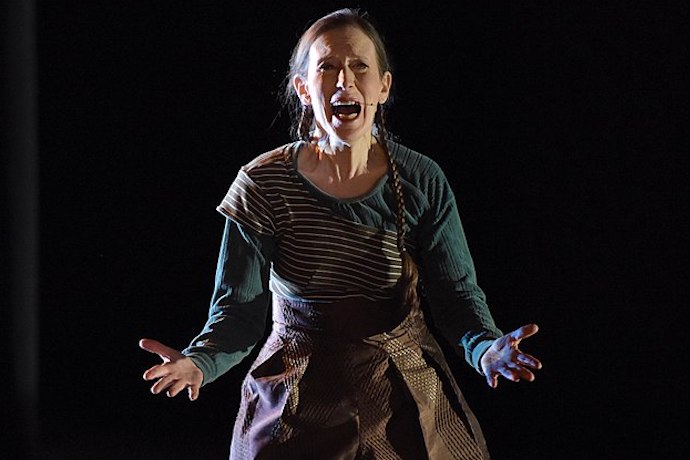
Who is Meredith Monk?
Meredith Monk is an American composer, performer, director, vocalist, filmmaker and choreographer who, from the 1960s has been known for her multi-disciplinary works combining music, theatre and dance. When asked who she is, however, Monk is clear on the fact that she thinks of herself as a composer.
Why is she so important?
Meredith Monk as been at the vanguard of contemporary classical music for more than fifty years and has influenced classical and pop musicians alike, among them Björk, Julia Wolfe and Missy Mizzoli.
When was she born?
She was born in November 1942.
What was her upbringing?
The daughter of businessman Theodore Glenn Monk and the popular and classical singer Audrey Lois Monk, she grew up in New York City.
At the age of three, Monk was diagnosed with strabismus and her mother signed her up to a Dalcroze eurhythmics programme, a technique which integrates music with movement. Monk says that it ‘has influenced everything I’ve done. It’s why dance and movement and film are so integral to my music. It’s why I see music so visually.’
What was her education?
She studied at Sarah Lawrence College during the early 1960s, where a performing arts programme allowed her to combine singing, acting, dancing and composition.
How did she make her career?
She started off as a solo performer, whose unique selling point was her brand of wordless vocalisation. From the offset she used her voice like an orchestra: croaking, wailing, whispering, yodelling, gurgling, bird-calling, miaowing and other vocal effects in the attempt to explore her timbral potential.
In 1968 she founded The House, a company dedicated to an interdisciplinary approach to performance. Ten years later she formed The Meredith Monk & Vocal Ensemble to explore new and wider vocal textures and forms. She went on to write and direct films, compose operatic works and write music for instrumental ensembles and symphony orchestras.
What and who was she influenced by?
Her early roots were in folk and rock music, but you could find elements of all sorts of genres in her music, not least American minimalism and the American experimental composer John Cage. In an interview with Tidal she once said: ‘I don’t think there is just one tradition in America. I feel closer to the American maverick tradition: one person going out into the woods and finding their own way.’
What are her works like?
They vary so much that it’s hard to find an overarching descriptor. Like folk music or American minimalism , it does include all sorts of modal harmonies. But there is more to it than that. Writing in The Guardian, Tom Service has said that her work sounds at once ‘ancient and modern, like a folk music for the world.’ You could say that her music is operatic in its dramatic thrust but incorporates all sorts of ‘extras’ including film, movement, ritual, myth, and avant garde performance art.
What are her most famous works?
Atlas (1991), Monk’s first fully fledged opera, remains one of her greatest achievements. Based on the life of Belgian–French explorer Alexandra David-Néel, it is an opera without libretto. The Critic K Robert Schwarz said it was like hearing a foreign language for the first time yet understanding every single word.
Then there’s her feature-length 1989 film The Book of Days, the story of a little girl living in a Jewish community during the middle ages who has the ability to envision the future. It is a haunting meditation on time and silence that is constantly interrupted by madness.
In Songs of Ascension, a multi-movement piece composed in 2011 to be performed in an eight-storey tower in California, she writes for a constantly changing assortment of voices and instruments, playing with the musical, sonic, metaphysical and literal connotations of upward movement. It is at once epic and otherworldly.
However In the 1990s, the composer William Duckworth asked Monk if only one of her pieces was to survive into the 21st century, which one would it be? Her answer was Dolmen Music, a vocal piece featuring different kinds of vibrato and their effects, because she thought it demonstrated an objectivity that 21st-century people would appreciate.